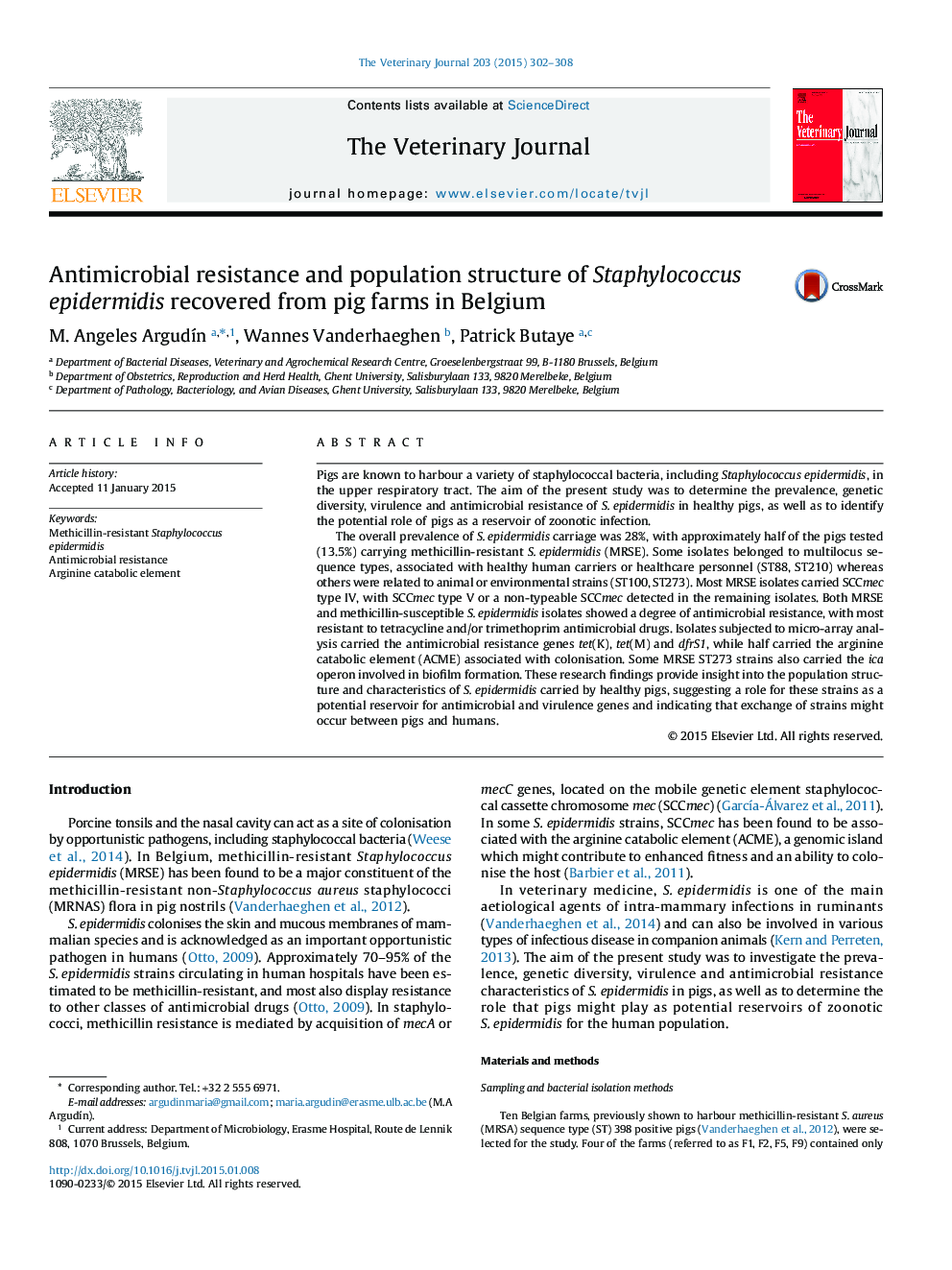| Article ID | Journal | Published Year | Pages | File Type |
|---|---|---|---|---|
| 5797436 | The Veterinary Journal | 2015 | 7 Pages |
â¢Pig nostrils harbour Staphylococcus epidermidis associated with human infection.â¢Isolates showed low levels of antimicrobial resistance but carried resistance genes.â¢Some isolates carried the arginine catabolic element associated with colonisation.â¢S.âepidermidis in pigs may act as a reservoir of antimicrobial and virulence genes.
Pigs are known to harbour a variety of staphylococcal bacteria, including Staphylococcus epidermidis, in the upper respiratory tract. The aim of the present study was to determine the prevalence, genetic diversity, virulence and antimicrobial resistance of S.âepidermidis in healthy pigs, as well as to identify the potential role of pigs as a reservoir of zoonotic infection.The overall prevalence of S.âepidermidis carriage was 28%, with approximately half of the pigs tested (13.5%) carrying methicillin-resistant S.âepidermidis (MRSE). Some isolates belonged to multilocus sequence types, associated with healthy human carriers or healthcare personnel (ST88, ST210) whereas others were related to animal or environmental strains (ST100, ST273). Most MRSE isolates carried SCCmec type IV, with SCCmec type V or a non-typeable SCCmec detected in the remaining isolates. Both MRSE and methicillin-susceptible S.âepidermidis isolates showed a degree of antimicrobial resistance, with most resistant to tetracycline and/or trimethoprim antimicrobial drugs. Isolates subjected to micro-array analysis carried the antimicrobial resistance genes tet(K), tet(M) and dfrS1, while half carried the arginine catabolic element (ACME) associated with colonisation. Some MRSE ST273 strains also carried the ica operon involved in biofilm formation. These research findings provide insight into the population structure and characteristics of S.âepidermidis carried by healthy pigs, suggesting a role for these strains as a potential reservoir for antimicrobial and virulence genes and indicating that exchange of strains might occur between pigs and humans.
